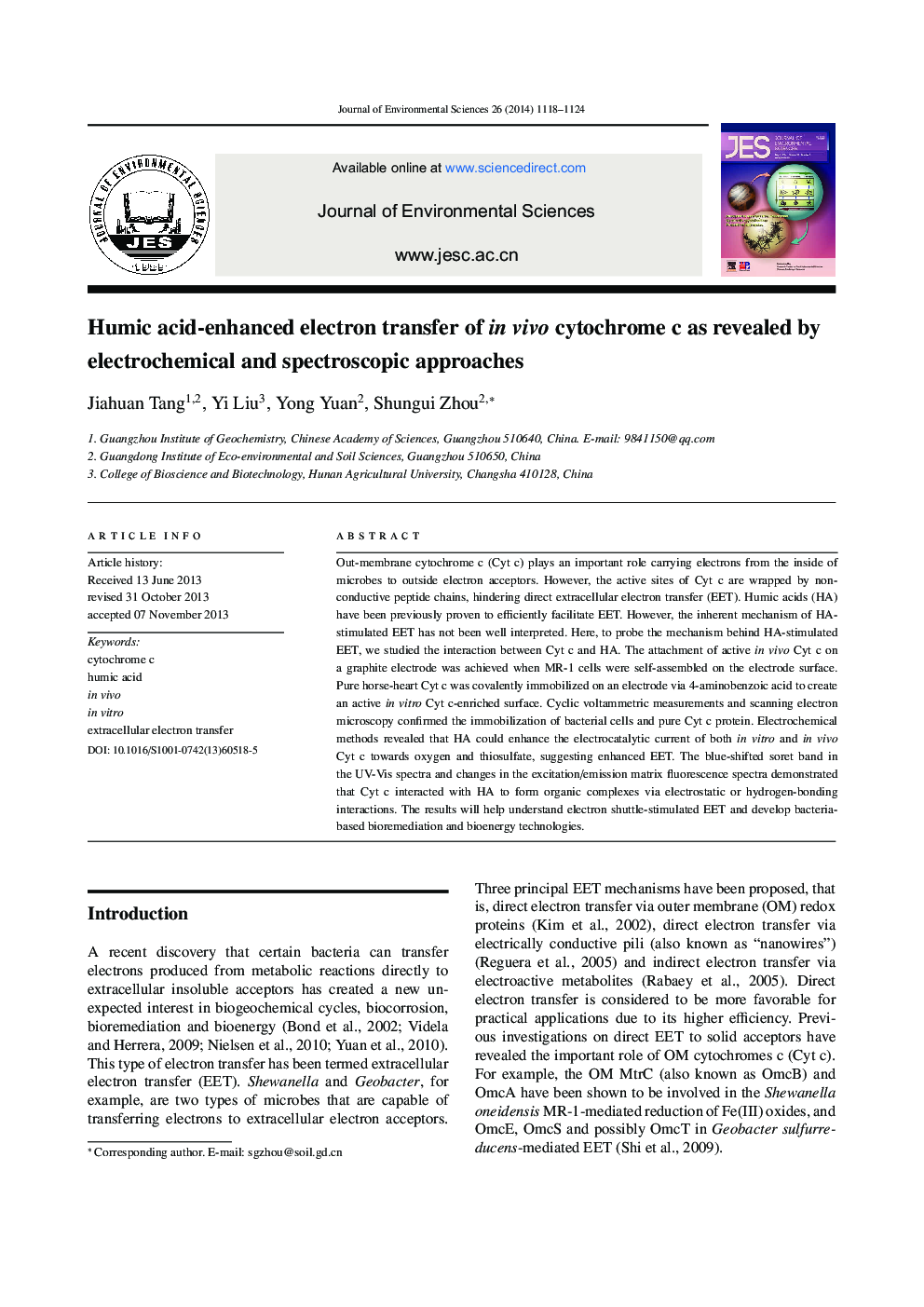| کد مقاله | کد نشریه | سال انتشار | مقاله انگلیسی | نسخه تمام متن |
|---|---|---|---|---|
| 4454150 | 1312470 | 2014 | 7 صفحه PDF | دانلود رایگان |

Out-membrane cytochrome c (Cyt c) plays an important role carrying electrons from the inside of microbes to outside electron acceptors. However, the active sites of Cyt c are wrapped by nonconductive peptide chains, hindering direct extracellular electron transfer (EET). Humic acids (HA) have been previously proven to efficiently facilitate EET. However, the inherent mechanism of HA-stimulated EET has not been well interpreted. Here, to probe the mechanism behind HA-stimulated EET, we studied the interaction between Cyt c and HA. The attachment of active in vivo Cyt c on a graphite electrode was achieved when MR-1 cells were self-assembled on the electrode surface. Pure horse-heart Cyt c was covalently immobilized on an electrode via 4-aminobenzoic acid to create an active in vitro Cyt c-enriched surface. Cyclic voltammetric measurements and scanning electron microscopy confirmed the immobilization of bacterial cells and pure Cyt c protein. Electrochemical methods revealed that HA could enhance the electrocatalytic current of both in vitro and in vivo Cyt c towards oxygen and thiosulfate, suggesting enhanced EET. The blue-shifted soret band in the UV-Vis spectra and changes in the excitation/emission matrix fluorescence spectra demonstrated that Cyt c interacted with HA to form organic complexes via electrostatic or hydrogen-bonding interactions. The results will help understand electron shuttle-stimulated EET and develop bacteriabased bioremediation and bioenergy technologies.
Journal: Journal of Environmental Sciences - Volume 26, Issue 5, May 2014, Pages 1118-1124